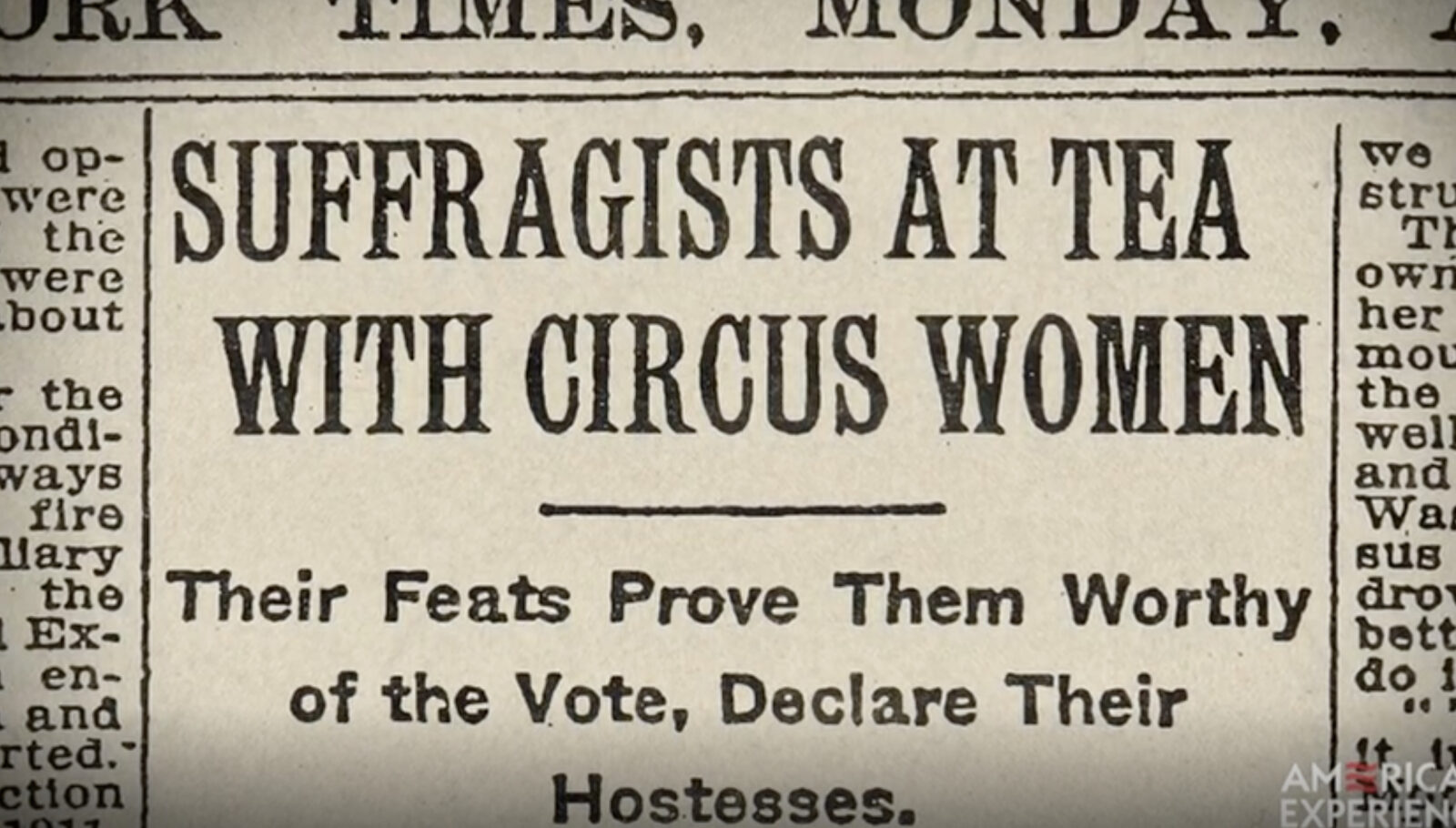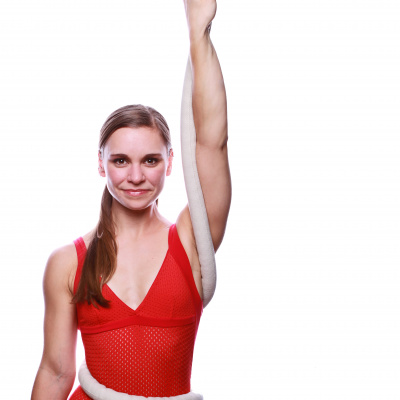Authentically Honoring Women in Circus
Morning Armor.
I woke up thinking about this publication: an article about women in circus to be published in alignment with International Women’s Day and Women’s History Month. As I’m prone to do, pre-coffee and shuffling to the kitchen in my slippers, I started brainstorming. Immediately, my guard was up. My history and biases brought me quickly to the defense: women are underrepresented! underpaid! not respected! second-class! Instances of injustice make my jaw set and my skin tingle – a sensation of armor emerging from the inside out. The coffee and I brewed together. I also knew I had to ground the article in something concrete, so I started a mental tally of all the women in circus I knew who held powerful positions. My mind immediately flooded with an impressively diverse list of researchers, historians, programmers, agents, creators, venue owners, company directors, studio owners, website founders, festival organizers, and figureheads. I thought of the well-respected coaches, performers, and students I work with. The list was so long that by the time I squashed my french press and filled my mug, I had abandoned my defenses and completely reversed course. Where is theabsence of women in circus, I wondered? Are we still underpaid? Less respected? What am I really writing about today? Unable to create a census that would accurately answer these questions in an afternoon, a binary came to mind: is an article about women in circus in 2023 purely a celebration of our contributions to the field, or is it part of corrective actions due to lack of representation and respect?
In turn, this made me question: what does it mean to have a holiday or a time period dedicated to a group of people? Here in the US, it’s either a celebration of that group’s contribution to the country which has been deemed worthy of national, annual recognition, or it is one tiny piece of an apology for an ugly history of exclusion and violence. International Women’s Day and Women’s History Month have an aura of both corrective action and celebration. I’m curious: at what point does a designated day or month tip from a restorative symbol to authentic honoring untinged with redress?

Rooted in the Right to Vote
Although my internet research has provided some conflicting information about the first International Women’s Day, what cannot be disputed is that since the early 1900s, multiple Western countries have collectively engaged in a movement to allow women to vote, hold office, be free from sexual harassment, have access to education, and have equal pay. Awareness and achievements related to these movements are now celebrated on March 8th by (some sources touted) over 100 countries around the world. Various countries even dedicated a full month to women’s history.
The push for women’s right to vote in various Western countries spans approximately two hundred years from the mid-18th century to the mid-20th century. In some instances, the right to vote was granted, then later taken away. Even when white women gained access to the vote, women of color were still disregarded and denied. Women’s suffrage is rooted in voting rights, but it was women’s place in the workforce (particularly here in the US, and particularly during WWI) that dispelled fears of women in public service and gave proof of their ability to physically and mentally contribute to society. Yet working conditions were unbearable, leading to strikes.
“It began in New York City on March 8, 1857, when female textile workers marched in protest of unfair working conditions and unequal rights for women. It was one of the first organized strikes by working women, during which they called for a shorter work day and decent wages. Also on March 8, in 1908, women workers in the needle trades marched through New York City’s Lower East Side to protest child labor and sweatshop working conditions, and demand women’s suffrage. Beginning in 1910, March 8 became annually observed as International Women’s Day. Women’s History Week was instituted in 1978 in an effort to begin adding women’s history into educational curricula. In 1987, the National Women’s History Project successfully petitioned Congress to include all of March as a celebration of the economic, political, and social contributions of women.” [1]
The video below, part of The American Experience by PBS, describes how women in the US circus contributed to the suffrage movement. They leveraged their celebrity status to hold meetings and spread news as they toured nationally. The Ringling Brothers supported the movement by allowing them to hold meetings on the circus lot. Circus women’s heightened presence in the public eye, visible strength, and daring actions had a similar effect as women in the workforce. It proved that women were equally capable and therefore worthy of equal treatment. [2]
Filling Historical Holes
I’m well through my first cup of coffee, and the question still stands: what is the state of women in circus today? Of course, were a census to be activated, the answer will be vastly different depending on the studio, school, community, or region surveyed. In an interview just last year on CircusTalk, performer and Patatrak Circus founder Ekpoawan Edem stated, “I have never taken statistics, but at a guess, I would say that over 90% of practicing circus artists from Nigeria and other parts of Africa are men. It is not arbitrary. There are many factors, especially social and financial, that don’t allow girls to flourish in the circus in this region.” In 2018, I attended the Montréal Complètement Cirque and a graduate course at Concordia University. My classmates and I saw a lot of performances that summer, and our conversations tended to veer toward (as I quipped in a blog post for the course) #circussomale #circussowhite.
This semester I’m teaching American Circus History at Pace University. Each week as we discuss the assigned reading, I ask my class, “Whose stories are missing from this history?” So far, the list has been repetitive: women, people of color, people with disabilities, slaves, indigenous people. These missing histories always bring to mind how Dr. Tina Carter, a circus scholar who studies aerialists with disabilities, uses the term disabled “to reflect both the medical and social models of disability as it is not only that the bodies of the artists bore impairments, but,” as she argues, “that the historians rendered them invisible and forgotten, therefore historically disabled by omission.” [3] With the aim of supplementation – akin to International Women’s Day, as both a remedy and a celebration – my in-class lectures have expanded upon these incomplete historical sources. Thankfully, historical holes are being filled. A quick search here on CircusTalk reveals books, galas, and festivals that specifically highlight the history and the current work of women in circus.
Circus Historical Society President Bruce Hawley recommendsElbows in my Ears (2022) by Danise Payne. He says it is “a book about courage and perseverance. Danise tells what it was like to be one of the first Black female clowns in a world dominated by white male ones. She also discusses the difficulties of life on the road with various types of circuses.” Circus history writer Dr. Steve Ward’sSawdust Sisterhood: How Circus Empowered Women (2016) “explores how the circus encouraged women and gave them the opportunity to compete and succeed as performers in their own right in an otherwise masculine world.” Dr.Kate Holmes’Female Aerialists in the 1920s and 1930s (2022) compares US and UK aerialists celebrities and their impact on culture through meticulous academic research and embodied experience. The aforementioned interview with Ekopoawan Edem and Elena Suárez Pariente was featured last year at this time and notes the importance of women supporting women in the industry.
The San Francisco’s Circus Center Trailblazers Gala “celebrates the many contributions – seen and unseen – of women to the circus.” And just a few days ago this month, Ireland’s Achill Island was home to Daring Dames, “Europe’s only all-female circus festival.” Festival Director Dea Birkett is quoted as saying, “Daring has many meanings, not all of which involve muscle. We can be brave in different ways, and these women performers show that artistry, warmth, and invention are as important as biceps. In many ways, this is the future of circus.” The article touts that the weekend included “established shows alongside new and emerging work from exciting and upcoming women circus artists who break the mould.”
To me, this is the crucial crux: the stage (actual or digital) is circus’ public face. Circus could be upheld by a battalion of women behind the scenes, but if the non-circus community doesn’t see women and women’s stories on stage, then we are still absent from history in that particular way. Has female representation on stage changed, and are more works about women’s stories being made, funded, produced, and seen?

Women making Circus about Women: A new CircusTalk Series
That exact question has prompted an upcoming CircusTalk series: women creators that are making circus about the experience of being a woman. The series aims to do these two things: continue to fill in the gaps of our disabled history to celebrate the contributions women have made to the industry, and celebrate those currently making work. The title uses the word women, but the series will not engage with the gender binary. Female-identifying and non-binary artists whose work addresses femininity, femaleness, and womanhood will be featured.
Persistence and Gratitude
Change can be slow, but it must be persistent. The filling of historical holes and the balancing of the scales that will tip dedicated calendar days from corrective celebrations to equitable, untainted admiration will take time. I think we can get there through repetition. Consistent applause for the contributions of women in circus will establish a habit of recognition. My hope is that future generations of circus artists and scholars do not bristle with internal armor at the idea of writing an article about women in circus, that they do not see a lack of stories about women in our industry. I hope they are purely flooded with names, resources, examples, and knowledge of how women have contributed to the field, how our stories are represented through circus, and that they feel empowered by the community and supported in their art. As we continue to celebrate women this month, I give my deep gratitude to those that are filling the historical holes, making meaningful work, and uplifting girls and women in their communities.
References [1] From the National Archives EEO Special Emphasis Observances: March: National Women's History Month https://www.archives.gov/eeo/special-observances#mar [2] https://ny.pbslearningmedia.org/resource/amex30circus-soc-suffrage/circus-women-and-the-suffrage-movement-the-circus [3] Carter, Katrina. "Freaks No More: Rehistoricizing Disabled Circus Artists." Performance Matters, vol. 4, no. 1-2, 2018, https://performancematters-thejournal.com/index.php/pm/article/view/135. Accessed 3 May 2021....
Do you have a story to share? Submit your news story, article or press release.



